David Collins Studio celebrates 35 years in the business
We take a look at the interior design studio's industry-defining hospitality projects
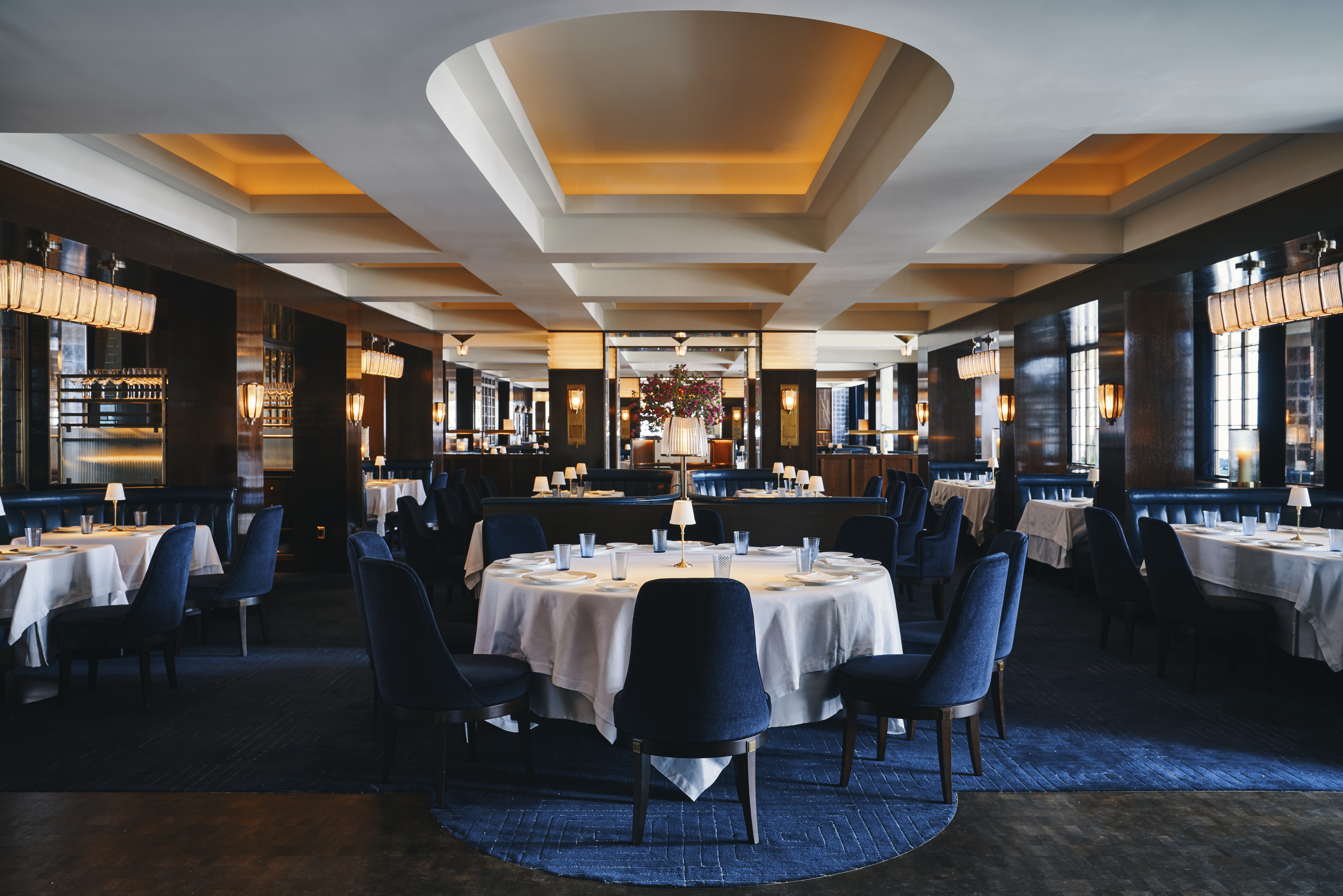
Ask any interior designer and they’ll tell you that the way an interior space is planned and furnished to create precisely the right mood will make or break a project. The slightest error in a sconce placement, or an injudicious choice of paint, never mind the imperfect angle of a rug or sofa, and the space will become off-kilter. You might not be able to pin-point exactly why you’re not completely comfortable in a restaurant or a bar or a drawing room, but your receptivity to the experience will be the equivalent of the pea in the princess’s bed.
The late David Collins understood this fundamental deeply, and it’s the reason why, time and again, his blue-chip clients kept coming back to him.
Seven years after his untimely death in 2013, his 45-member, London-based studio marks its 35th anniversary this month, and there is plenty to commemorate, not least his lasting impressions on the hospitality industry around the world, particularly in London.
‘David was endlessly curious about culture, design, music and film,’ says Iain Watson, Collins’ co-founding business partner and the CEO of David Collins Studio. ‘His inspiration came from far and wide.’
Trained at the Dublin School of Architecture, Collins once observed that ‘something that is done really simply but beautifully can become very interesting’. For over three decades, he personally translated this dictum into a dizzying range of private and commercial projects, beginning with Pierre Koffman’s gorgeously lit La Tante Claire back in 1985, right through to the gilded opulence of the Blue Bar at the Berkeley, and Brasserie Zedel, the latter – a study in fin de siècle excess zhooshed up for the Millennial one-percent – just one of several high-profile projects Collins worked on with his long-time clients, Corbin & King.
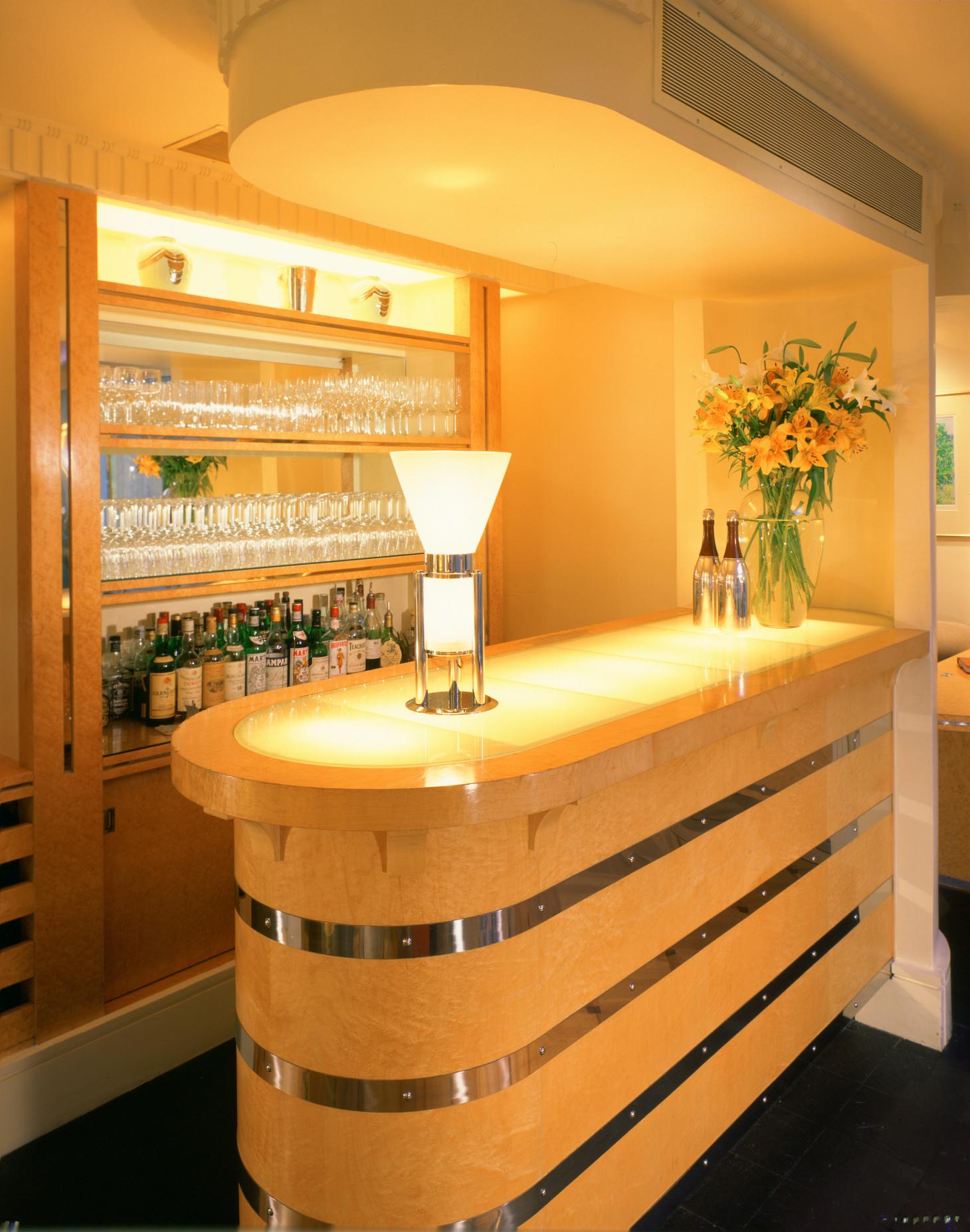
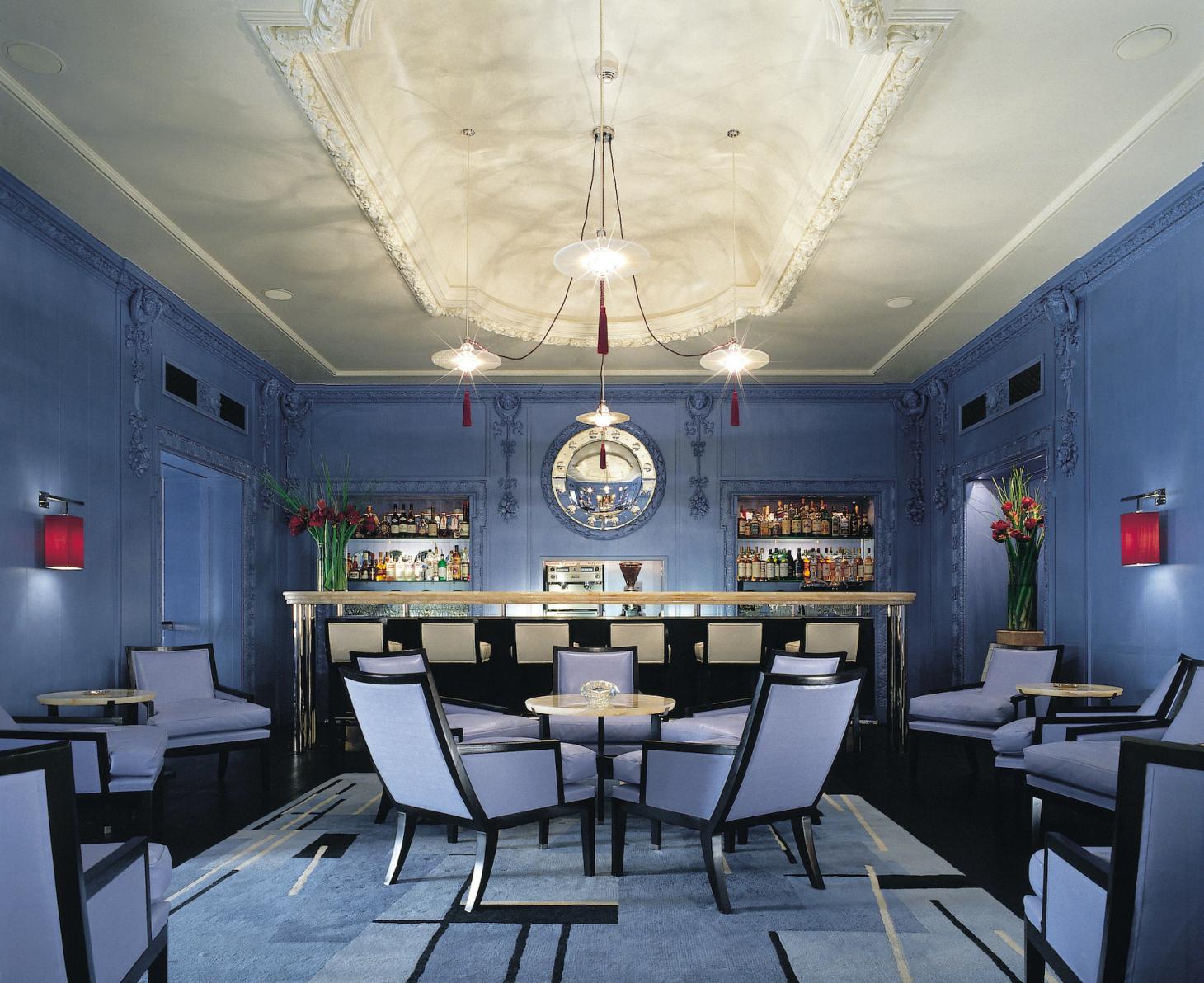
Above, La Tante Claire, 1985. Below, The Blue Bar at The Berkeley, 2002
A David Collins interior is a stage set. Grounded in the aesthetics of the decorative arts movement, each space – whether restaurant, bar, hotel room, fashion boutique or even a Cunard ship – features a dramatically theatrical unfurling of richly detailed furnishings. The vibe is distinctly masculine with a predilection for dark stained leather, acres of black and white marble, and hard metal edges.
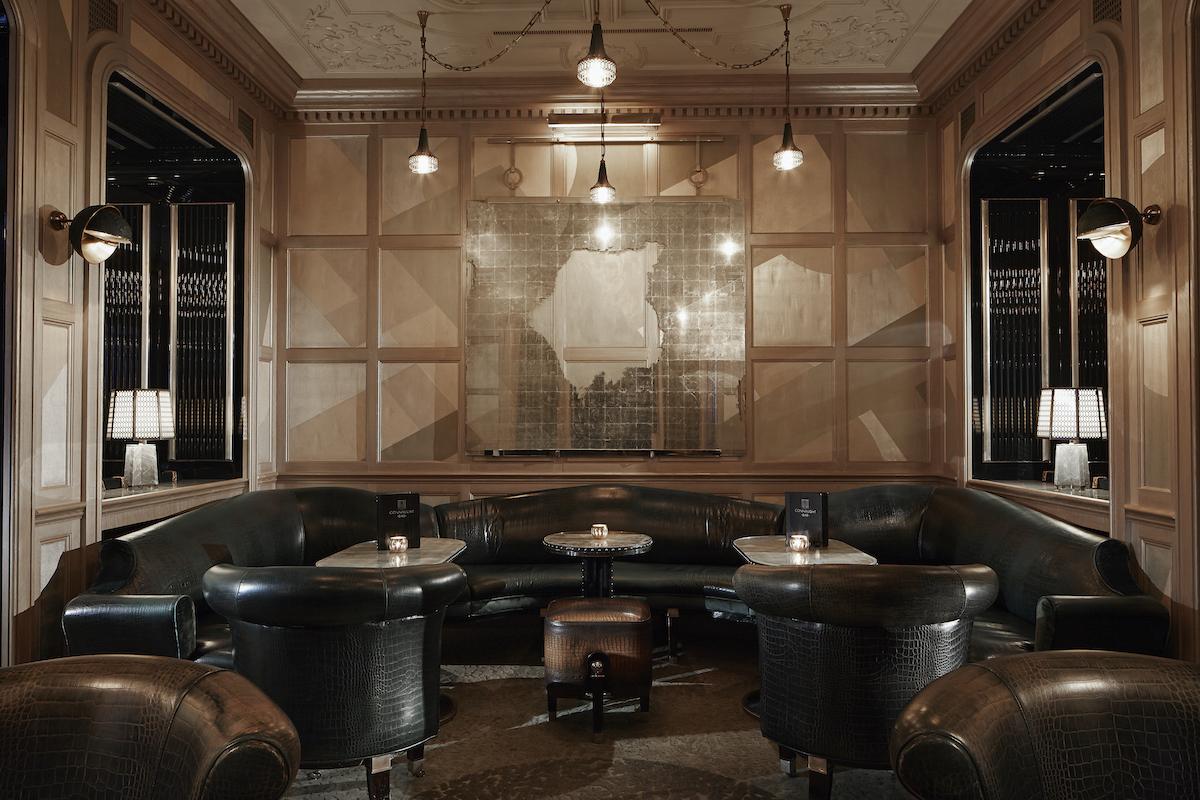
The Connaught Bar, 2008
There was also a penchant for oversized mirrors and reflective surfaces, which Collins paired with a sixth sense for placing furniture in a way that offered convivial privacy as well as direct sightlines to other tables. It’s little wonder that The Wolseley, for instance, along with Bob Bob Ricard and the Connaught Bar remain favourites for a spot of discrete celebrity-watching; or that their designs have been much copied, but rarely equalled.
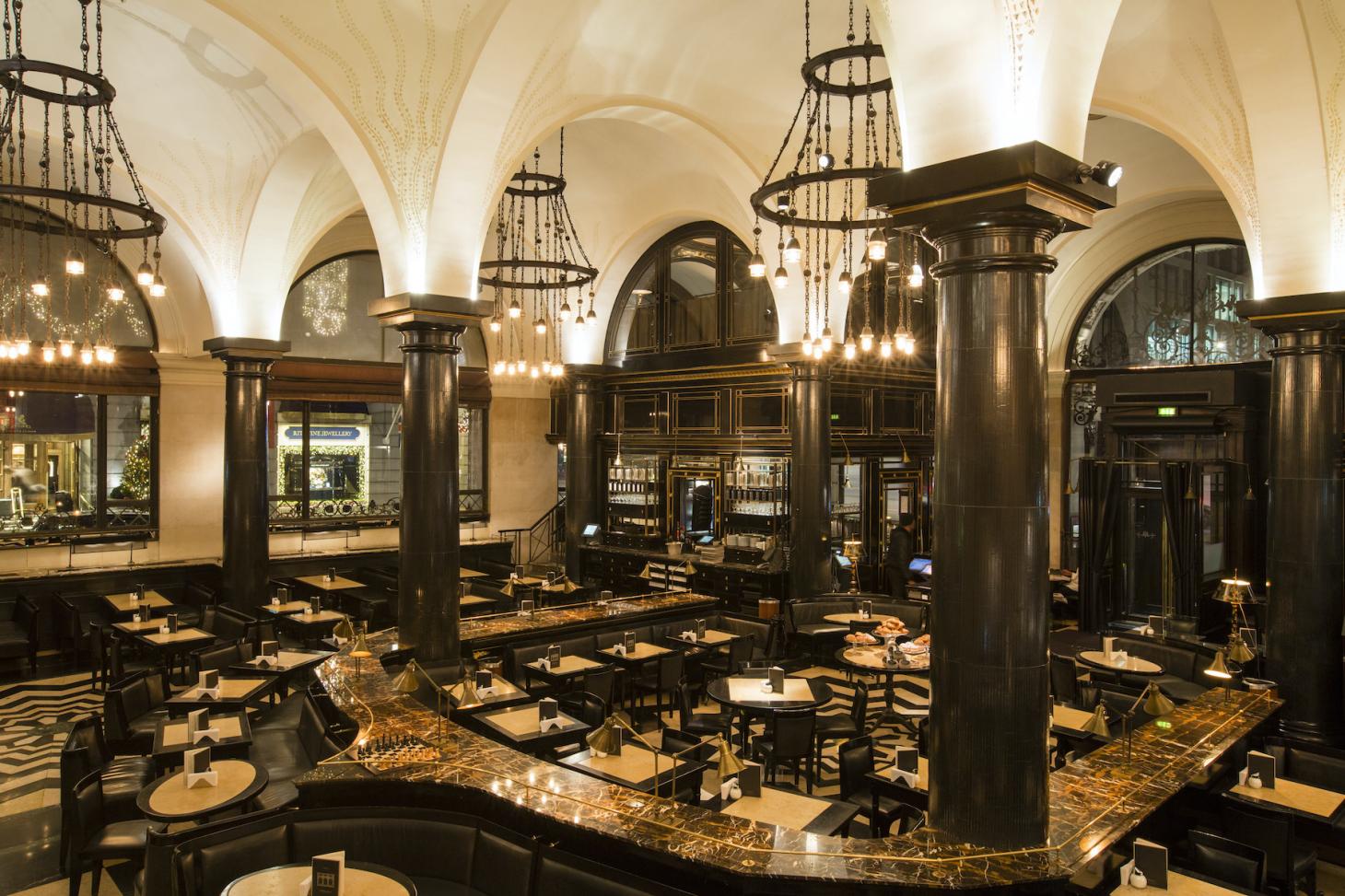

Above, The Wolseley, 2003. Below, Bob Bob Ricard, 2008
For industry observers and afficionados, what’s been particularly gratifying is that Collins’ Studio has continued to nurture and, in many ways, amplify this bent for the theatrics across an unusually diverse range of projects – a Mandarin Oriental in Doha and The Delaire Graff Estate in South Africa to a Thomas Keller outpost in New York and Harrods’ fabled Food Hall. All of which, says design director Lewis Taylor, have provided the studio with ‘a unique view of luxury’.
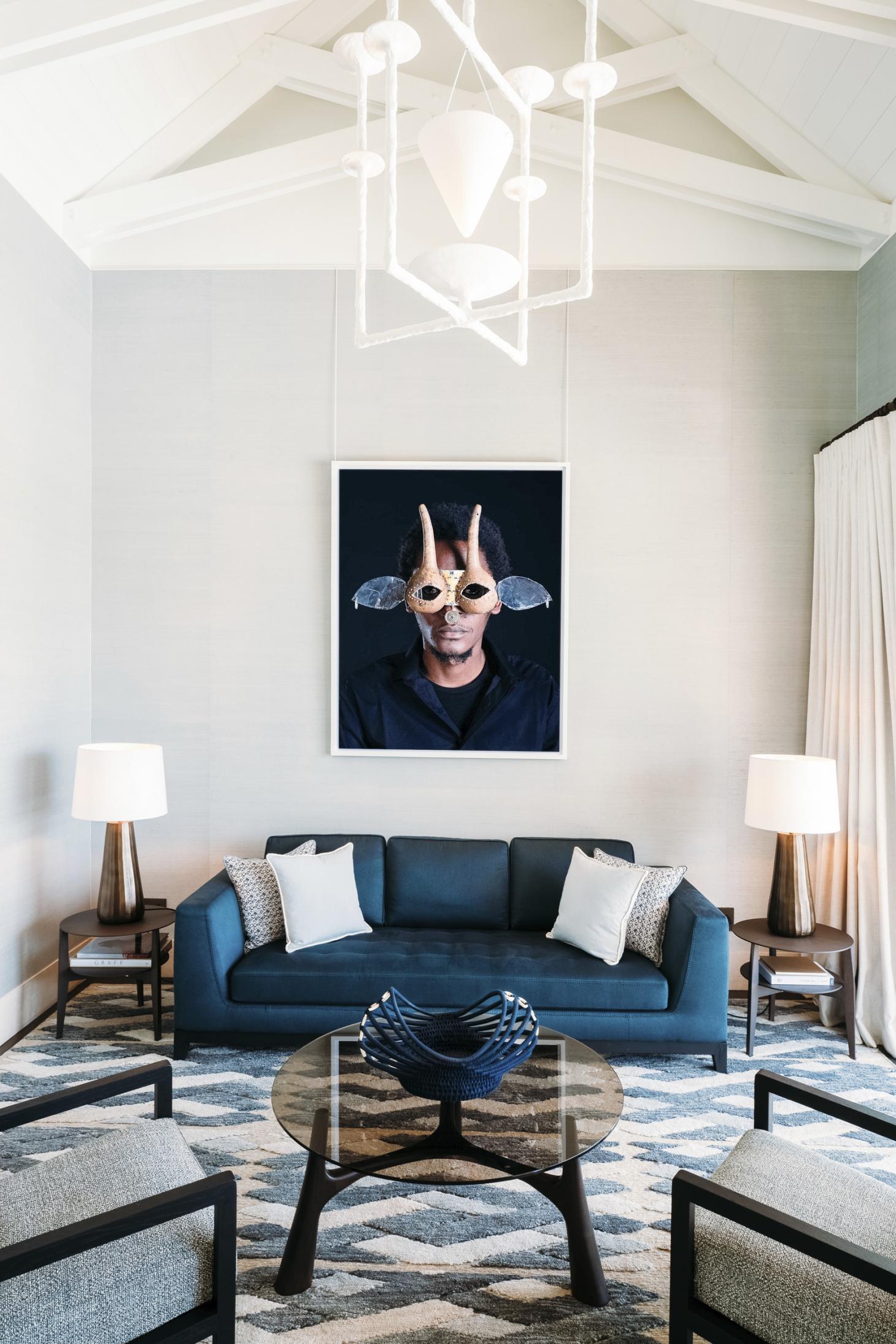
The Delaire Graff Estate, 2018
The imprimatur to create lasting design remains a constant, though. As the studio’s creative director Simon Rawlings points out, though increasingly discriminating end-users want a unique experience, ‘we are not creating disposable design. [In fact], most of our material innovations refer to historic techniques, artisanal approaches and craft.’
It’s a sentiment echoed by associate director, Siobhan Kelly. ‘There is an ever-expanding consumer appetite for environmentally conscious hospitality venues,’ she says. ‘A holistic approach to sustainability is no longer an option. It’s an imperative. It will be extremely challenging for businesses who don’t make this shift in approach to comfortably exist.’
Of course, the shadow of COVID looms, particularly over the luxury end of the industry, but the studio’s top brass, at least, are upbeat, if for no other reason than their collective belief that quality and experience float. And being able to pivot is key. As Watson puts it, ‘I think it could be interesting to show how agile the studio’s DNA could be with an unpredictable project. Could we design a car interior or a capsule range of clothing? If we believe in the brief, we should do it.’
For now, it’s heads down. The days are packed. Finishing touches are being made to Nobu Portman Square in London, while marquee projects include the David Beckham-branded suites in Macau, a terrace restaurant in Nice, alongside a new Cunard ship and Harrods Chocolate Food Hall. Also in the pipeline are private residences in the UK and abroad, turnkey commercial residences, and clubhouse spaces. ‘Our approach is never to replicate what has been done before,’ says Taylor, ‘but to give each project a sense of place and identity.’
Taylor is preaching to the converted. Suffice it to say that we’re very much looking forward to another 35 years.

The Gilbert Scott Bar, 2011
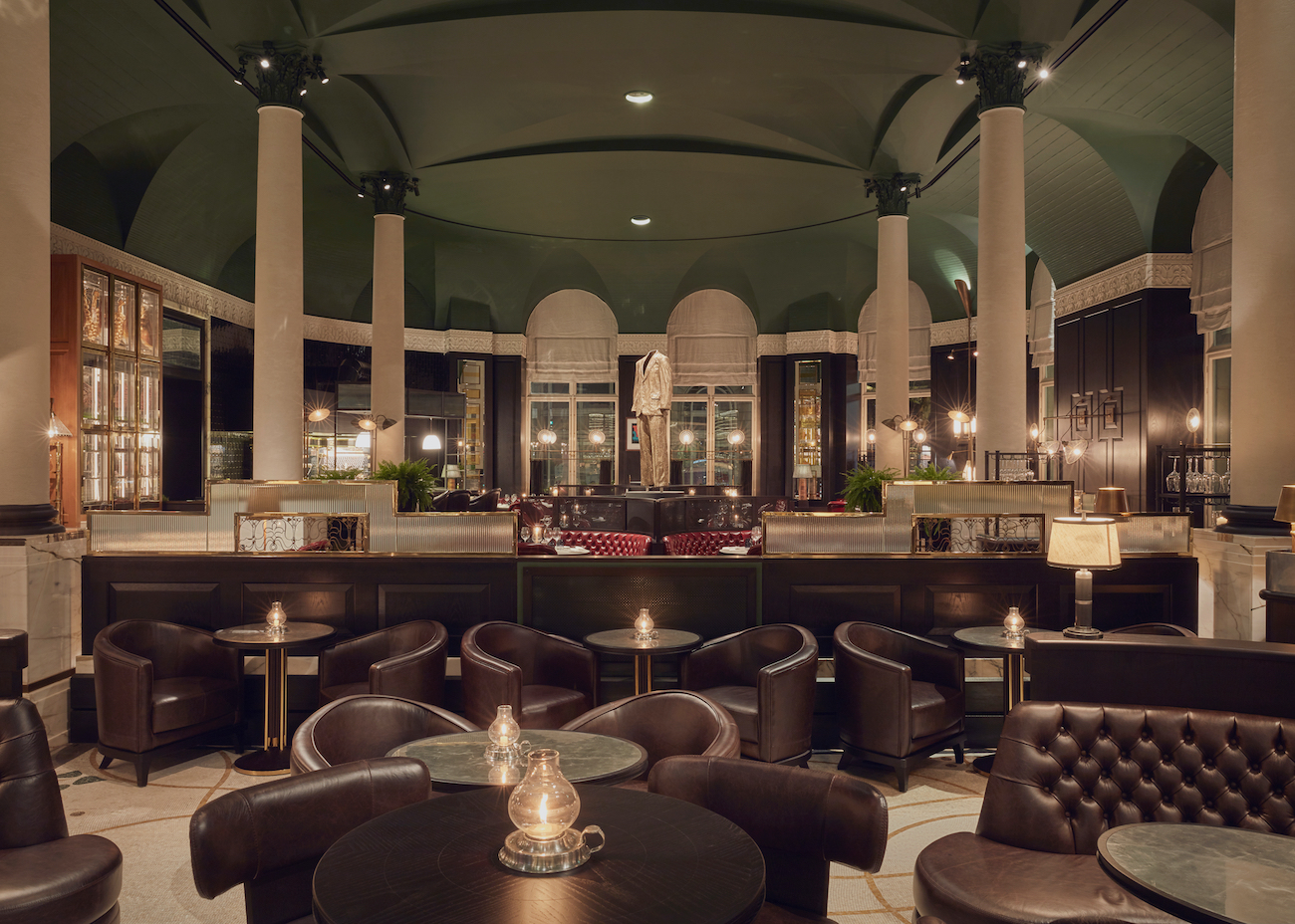
Kerridge’s Bar & Grill, 2018

Mandarin Oriental Doha, 2019
Receive our daily digest of inspiration, escapism and design stories from around the world direct to your inbox.
Daven Wu is the Singapore Editor at Wallpaper*. A former corporate lawyer, he has been covering Singapore and the neighbouring South-East Asian region since 1999, writing extensively about architecture, design, and travel for both the magazine and website. He is also the City Editor for the Phaidon Wallpaper* City Guide to Singapore.
-
 RIBA reveals more three shortlisted structures for 2025’s House of the Year award
RIBA reveals more three shortlisted structures for 2025’s House of the Year awardThree more houses join the shortlist for the UK’s highest domestic architectural accolade. We explore the Triangle House, Amento and Jankes Barn
-
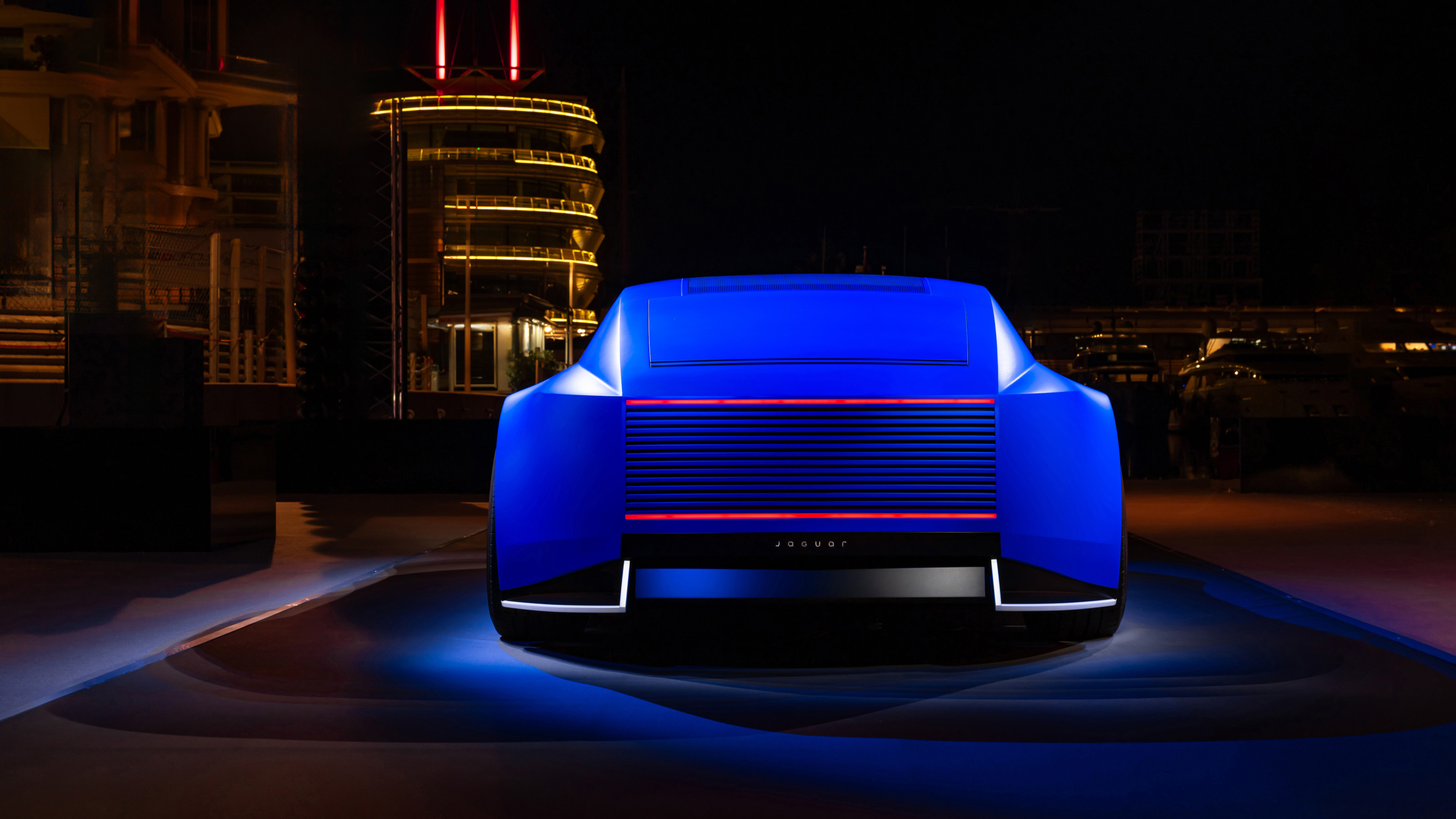 JLR is a mainstay of modern motoring luxury, but do car brands need creative figureheads?
JLR is a mainstay of modern motoring luxury, but do car brands need creative figureheads?With Gerry McGovern departing from Jaguar Land Rover, what next for the Indian-owned, British-built house of brands?
-
 Royal Huisman brings superyacht scale to a new age of sail with the 81M Sky project
Royal Huisman brings superyacht scale to a new age of sail with the 81M Sky projectRoyal Huisman’s The Sky project is a mission to build the world’s tallest sloop – we explore the technical challenges of creating a sailing superyacht
-
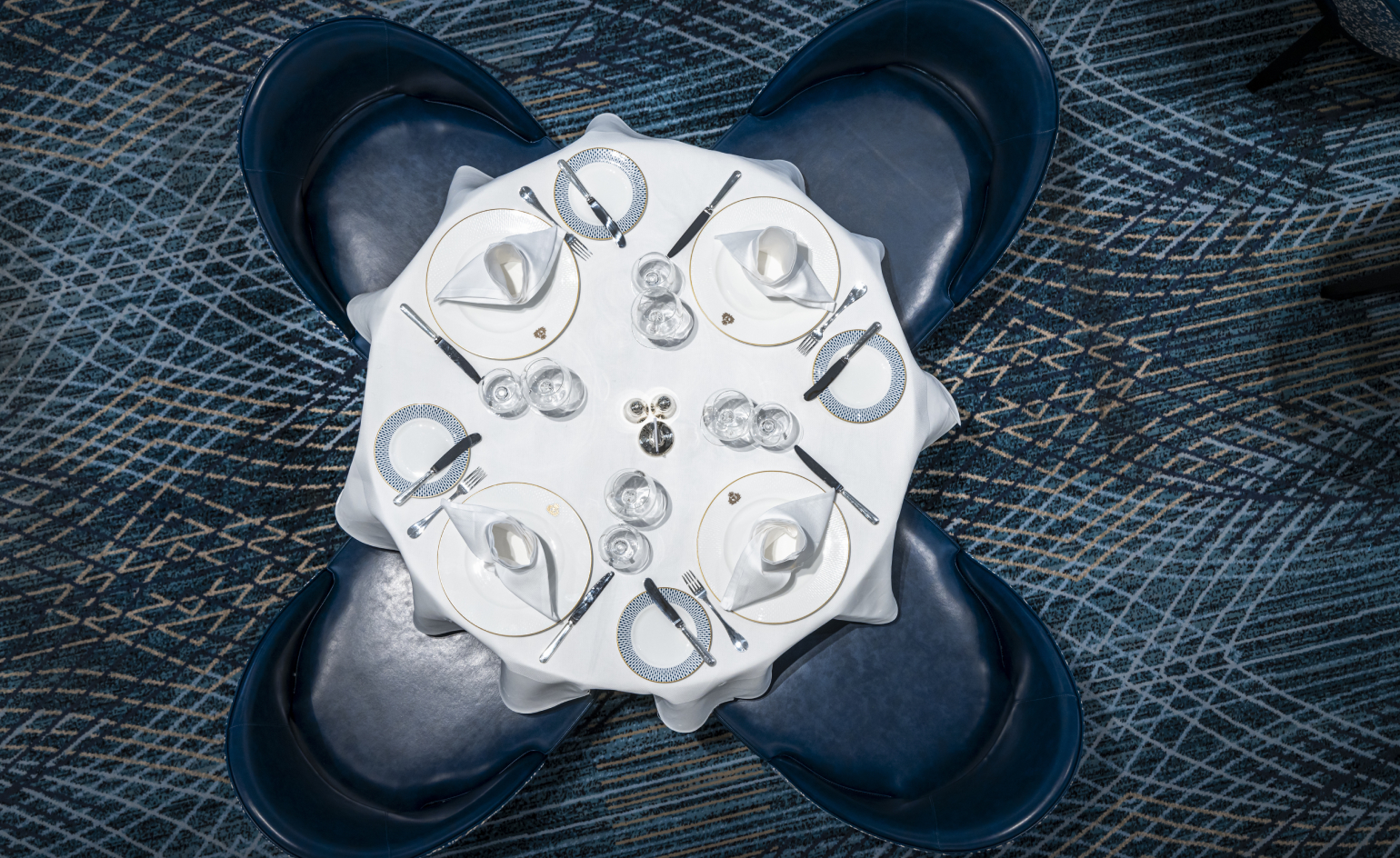 Inside Cunard’s Queen Anne Britannia Restaurant, designed by David Collins Studio
Inside Cunard’s Queen Anne Britannia Restaurant, designed by David Collins StudioCunard’s Queen Anne, the new luxury cruise ship, introduces its state-of-the-art Britannia Restaurant designed by David Collins Studio
-
 Tre Dita restaurant offers Tuscan cuisine and Italian glamour in Chicago
Tre Dita restaurant offers Tuscan cuisine and Italian glamour in ChicagoTre Dita at Chicago’s St Regis Hotel journeys through the small towns of Tuscany to dish up plates of authentic Italian cuisine
-
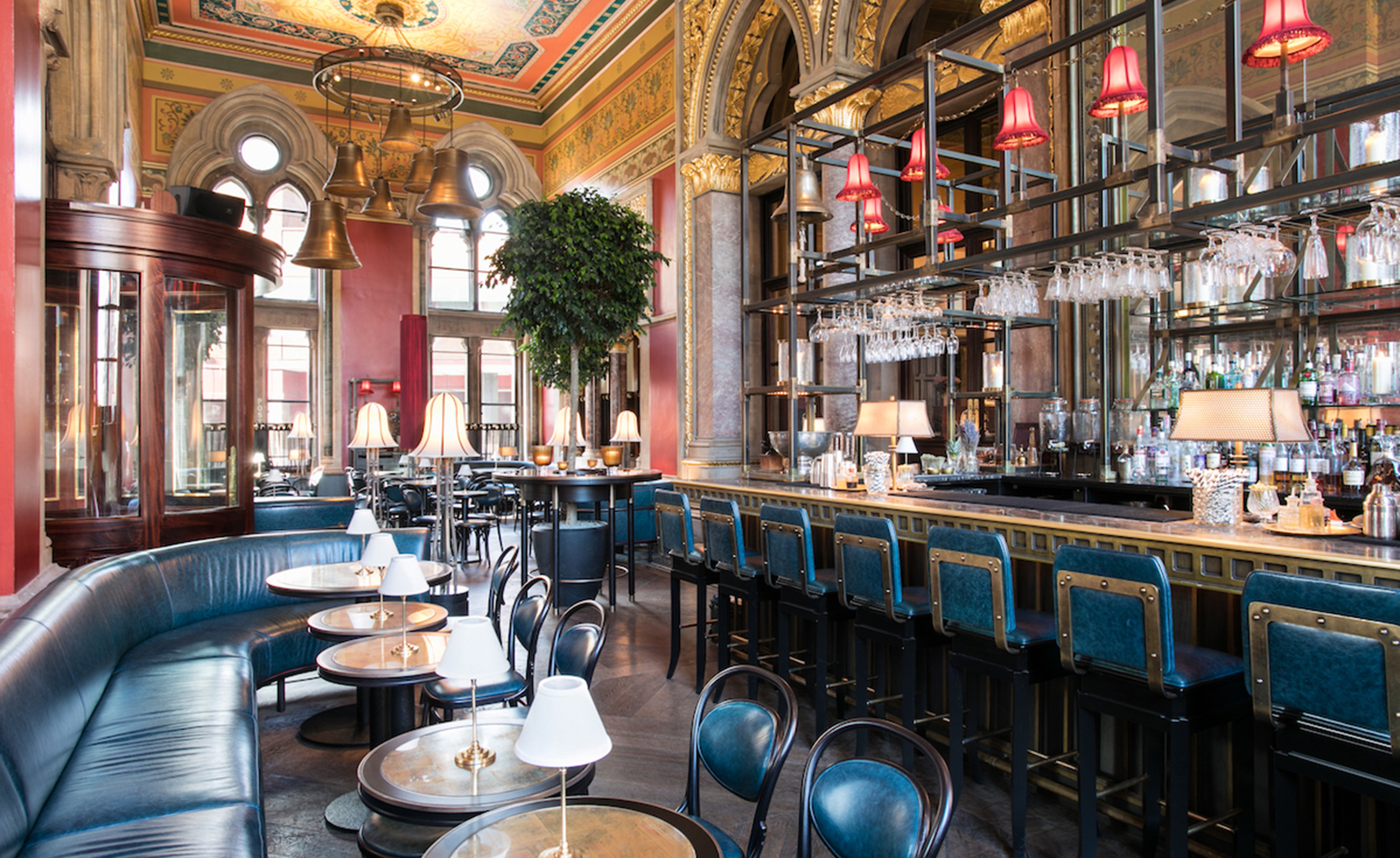 George’s Bar — London, UK
George’s Bar — London, UK -
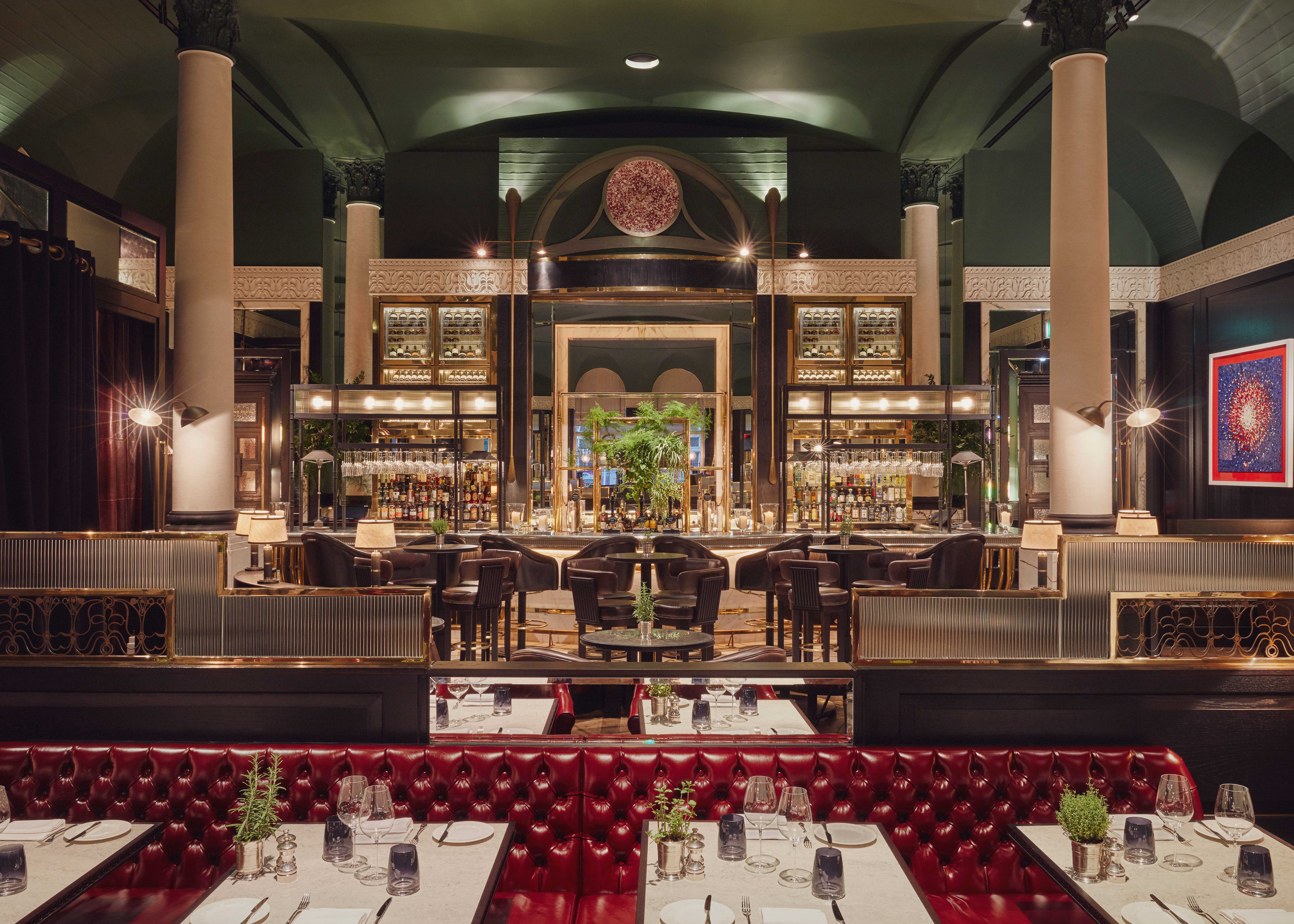 Kerridge’s Bar & Grill — London, UK
Kerridge’s Bar & Grill — London, UK